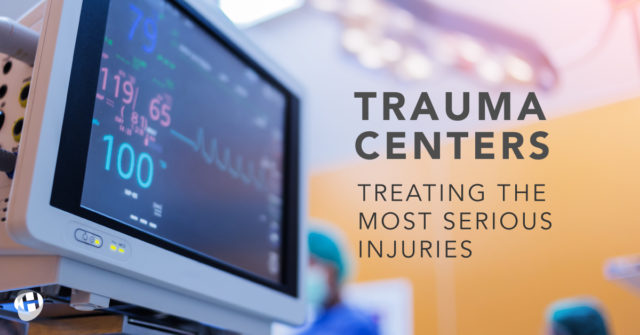Along with emergency medical services and hospital emergency rooms, hospital trauma centers are an important part of Pennsylvania’s emergency care system.
Patients suffering the most severe, life-threatening injuries, such as car crashes, are taken to hospital trauma centers for specialized care. Each year, Pennsylvania’s trauma centers treat an average of 40,000 patients.

Here’s a primer on Pennsylvania’s trauma centers and the important role they play.
What is a trauma center?
According to the Pennsylvania Trauma Systems Foundation (PTSF), a trauma center provides specialized medical services and resources to patients suffering from traumatic injuries.
Trauma centers have:
- Highly skilled teams of medical specialists to provide care during and after an occurrence of trauma
- Nursing teams, including trauma nurses, ready in the operating room and critical care units
- Up to 16 physicians in specialties ranging from neurosurgery to obstetrics/gynecology on standby
Traumacenters operate continuously. They are usually located within a hospital’s emergency room—although many of the services and resources, such as operating room capabilities, needed to provide trauma care are located in other parts of the hospital.
Pennsylvania is home to 38 trauma centers, which operate with different levels to reflect the types of specialized care available. These centers receive special funding from the state to support the specialized services and medical experts needed.
PTSF has a list of the state’s trauma centers on its website.
What is trauma?
Trauma refers to serious or critical bodily injuries. PTSF reports that the most common causes of injuries treated by trauma centers are falls, motor vehicle crashes, acts of violence, and motorcycle accidents.
What’s the difference between a trauma center and an ER?
Emergency rooms provide care to people suffering from a wide variety of injuries and illnesses. These include sprained ankles and heart attacks. Patients can take themselves to an emergency room or be transported via ambulance.
Trauma centers are for patients with the most extreme injuries, including blunt trauma and traumatic brain injuries. Medical professionals, such as emergency medical services personnel, usually will decide whether a patient needs the specialized treatment provided by a trauma center.
What are the trauma center levels?
The American Trauma Society (ATS) outlines five designation levels:
- Level I trauma centers provide total care for every aspect of injury, from prevention through rehabilitation
- Level II trauma centers initiate definitive care for all injured patients
- Level III trauma centers have the ability to “provide prompt assessment, resuscitation, surgery, intensive care, and stabilization of injured patients and emergency operations,” according to the ATS
- Level IV trauma centers provide advanced trauma life support before transferring patients to a higher-level trauma center. They provide evaluation, stabilization, and diagnostic capabilities for injured patients
- Level V trauma centers provide initial evaluation, stabilization, and diagnostic capabilities and prepare patients for transfer to higher levels of care
Pennsylvania trauma centers save lives!
In Pennsylvania during 2015, 96 percent of the 43,106 trauma patients treated at accredited trauma centers survived. The percentage of unexpected survivors has more than doubled since 1987!
